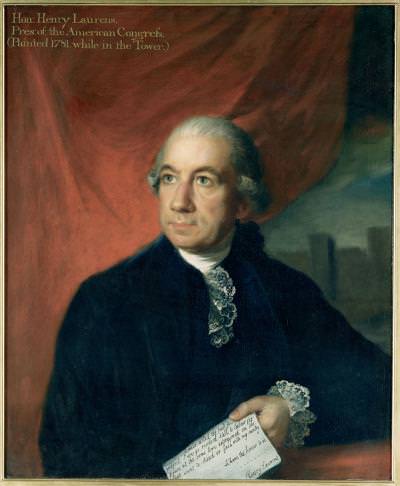Rice, Scotland and slavery
Richard Oswald
Richard Oswald was an eighteenth century Scottish merchant. Born 1705, he was the second son of the Reverend George Oswald of Caithness, and at about age 20 he was apprenticed to a successful tobacco and sugar trading house, travelling to America and the West Indies as their factor. In 1746 he moved to London and joined the circle of Scottish merchants who operated out of the city. He married Mary Ramsey, the daughter of a wealthy Jamaican planter and backed by her fortune he and his associates of Grant, Oswald & Company purchased the derelict slave fortress of Bance Island in 1748.
Bance Island (also Bunce or Bence) was located in the estuary of the Sierra Leone River along the Rice Coast of West Africa. The firm rebuilt, fortified and expanded the fort’s slave compounds and the island once again became a place where captured Africans were confined and then placed on ships for sale in America and the West Indies. Approximately, 12,000 enslaved Africans were processed through Bance Island.
With the proceeds from his various slave-fueled enterprises, Oswald purchased Auchincruive estate in Ayrshire, Scotland in 1764. The mansion was designed by the famed Scottish architect and interior designer, Robert Adam. At Auchincuive, Oswald cultivated various varieties of sugar cane in his glasshouses and sent seeds to his estates in Florida, when he still thought cane was a viable crop to grow in Florida.
In 1779, Oswald turned to planting rice, for which the swampy Florida estates proved more conducive.
Bance Island
Bunce Island was the largest British slave castle on the Rice Coast of West Africa. Founded around 1670, it exported tens of thousands of African captives to North America and the West Indies until the British Parliament finally closed it down in 1808. During its long and tragic history, Bunce Island was operated by four London-based companies: the Gambia Adventurers; the Royal African Company of England (which had official recognition from the British Crown); and the private firms of Grant, Oswald & Company and John & Alexander Anderson.
During the 1750s Richard Oswald, Bunce Island’s principal owner, forged a strong business and personal relationship with Henry Laurens, one of the richest rice planters and slave dealers in the Colony of South Carolina. Rice planters in coastal South Carolina and Georgia were willing to pay high prices for people brought from the Rice Coast of West Africa where farmers had been growing rice for hundreds of years and were experts at its cultivation. African rice-growing know-how was essential to the prosperity of the American rice industry. Henry Laurens acted as Bunce Island’s business agent in Charleston, receiving the castle’s human cargoes from Sierra Leone and advertising and selling the African captives at auction. Laurens took a 10% commission on each sale, returning the profits to Oswald in London, often in the form of rice paid by South Carolina planters.
Lemuel Francis Abbott, Henry Laurens, Inscription (upper left corner): Hon: Henry Laurens, / Pres: of the American Congress. / (Painted 1781. while in the Tower.) United States Senate Collection, Cat. no. 31.00010.000
Bunce Island’s records show that Henry Laurens sent his own ships directly to Bunce Island to obtain slaves for his newly opened rice plantations in coastal Georgia, paying for them with ship-building supplies made from Carolina pine.
Bunce Island also illustrates the slave trade’s political impact in North America. During the American Revolutionary War the French, weary of Bunce Island’s commercial success, used their alliance with the American colonists to attack and destroy the British-owned castle in 1779. Thus, extending the war’s arena to the west coast of Africa. But even more important, Henry Laurens, who had grown rich from the trade in African slave labor, became President of the Continental Congress and later US envoy to Holland. Captured by the British and imprisoned in the Tower of London, he was bailed out of jail by his friend Richard Oswald. Laurens and Oswald later were both delegates for their respective countries during the Treaty of Paris that ended the American War for Independence. Thus, US independence was negotiated, in part, between Bunce Island’s British owner and his long-time agent in South Carolina.
Bunce Island’s legacy is apparent also in the enduring family ties between the Gullah people – African Americans living today in coastal South Carolina and Georgia – and their Rice Coast cousins in Africa. The connection has been explored in two well-publicized pilgrimages by the Gullah to Bunce Island. In 1989, Emory Campbell, Director of Penn Center on St. Helena Island, South Carolina, led a group of Gullahs to Bunce Island in a tearful journey memorably recorded in the PBS documentary “Family Across the Sea.” In 1997, Mary Moran and her family from Harris Neck, Georgia visited Bunce Island on their trip to Sierra Leone to meet the Mende people who share an ancient African song they have retained in their family for generations here in America. Their visit was recorded in the documentary, “The Language You Cry In.”


